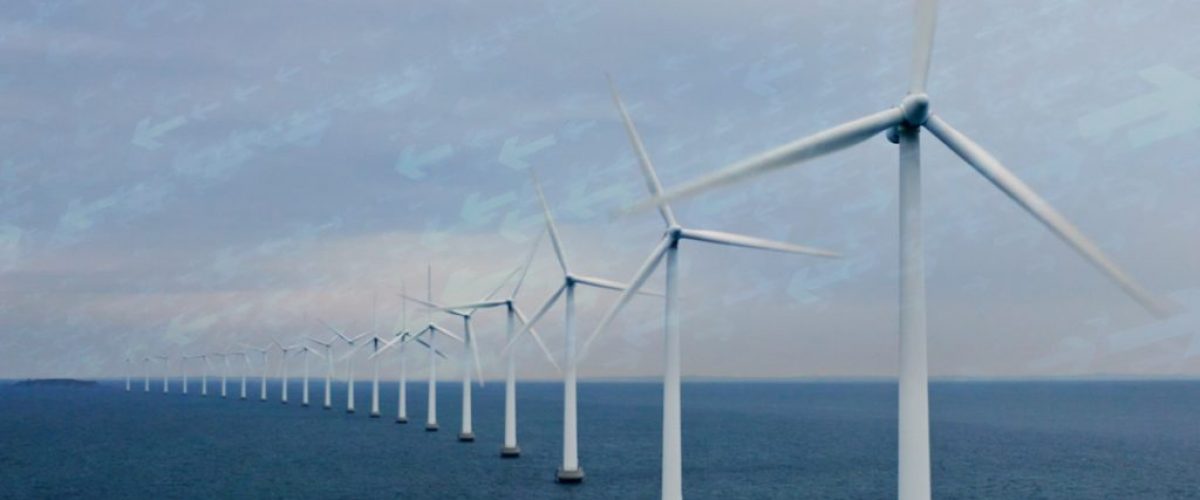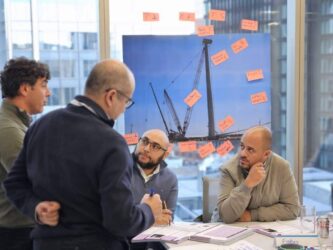As a manager in the wind power sector, it goes without saying that you want a safer, more productive and more cost-effective approach to asset management. But how can you harness safety and risk-based principles to achieve this?
Operations and maintenance (O&M) activities typically represent around 25 to 30% of the total lifecycle costs for offshore wind farms or between £2m – £8million per year for a 500MW offshore windfarm.
In this context, the need to streamline O&M and reduce costs is obvious. For all managers – whether you’re responsible for development, projects and construction, O&M or overseeing asset management – more effective, and more predictable, control of work activities is critical. And risk-based principles can help provide that control, enabling your business to operate more safely, efficiently and successfully.
Despite this, too many managers still look at safety as business cost, rather than a way of optimising assets and improving performance. When you’re looking at asset management, how often does safety spring to mind, beyond protecting people from injuries and ill-health? Yet, safety and risk management principles, when properly applied, provide a win-win opportunity to improve planning, minimise disruption, and control costs, as well as protect people and the environment.
A risk-control perspective
Asset management optimisation generally involves three related elements:
- controlling costs – is the O&M budget under control or are you spending more than you planned?
- maximising plant availability – does the turbine turn when the wind is blowing?
- minimising unplanned downtime – are you planning ahead to reduce the chance of failure?
So, what does a risk mindset look like when we’re talking about asset optimisation? Perhaps the most obvious place to start when considering the risk profile of assets is to focus on breakdowns versus preventative maintenance.
If you find you’re dealing with more breakdowns than preventative maintenance, then you are likely to see increased downtime, reduced availability and increasing O&M costs. From an asset management standpoint, you want to see the opposite: a higher preventative maintenance to breakdown ratio.
We can further classify O&M activities into routine (preventative) and non-routine activities (or breakdowns). In turn, these can be frequent or infrequent. And the nature and frequency of these activities carry varying inherent risks.
Frequent, routine activities – such as inspection, monitoring, sampling and other non-invasive tasks – will tend to be inherently low risk. In contrast, infrequent, unplanned (breakdown) activities, such as a major component repair, will be more invasive and may involve contractors unfamiliar with the site, and so have high inherent risk.
Frequent, non-routine activities may be classified as medium risk; they are invasive but familiar and will have a verified method of dealing with them (nacelle repairs, crane repairs). Equally, infrequent, routine activities will be medium risk as although they may be non-invasive, they may be unfamiliar and have fewer verified controls.
Risk of failure
By taking this approach, you can look across your O&M activities and work out whether they represent a low, medium or high inherent risk. And when we talk about risk here, we mean risk of failure, which could lead to:
- people being injured;
- poor quality work;
- work repeated because it wasn’t completed correctly first time;
- environmental impacts; and
- costs increasing.
These are all things that could go wrong from the asset perspective. So if a wind business can develop ratios of low to medium to high risk activities and look at the percentage in each, it can see that if the ratio is increasing (most activities are high risk) then there are likely to be increasing costs and downtime, reduced availability, and more injuries. Likewise, if the ratio is the other way, with a high percentage of activities in the low risk category, the business is in good health, from an asset perspective and ultimately from a human safety perspective.
Tactical tool
A risk-based approach to O&M therefore offers you a useful tactical tool for driving good asset management. Using risk principles, you can constantly monitor and prepare for the unplanned, infrequent high risk activities. So when it happens, you are ready.
You can also better identify when you’re approaching this type of activity, and intentionally stop a turbine when it’s not windy to replace a gearbox without waiting for it to fail. The result is better controlled, informed and streamlined processes, and improved asset and safety performance.
While most wind power companies are investing heavily in finding ways to optimise physical assets, few are utilising risk principles to do this. By failing to recognise and exploit tools and resources readily available in a sector well versed in safety and risk management, they are missing an untapped opportunity.
Made for you
If you are a Managing Safely for Wind Power certificate holder, our online refresher program is packed with tools such as these. Our innovative Performance Support tools also include tactical content for managers. Check it out here.
Is safety your biggest asset? © 2021 by Rakesh Maharaj – ARMSA is licensed under CC BY-NC-ND 4.0






